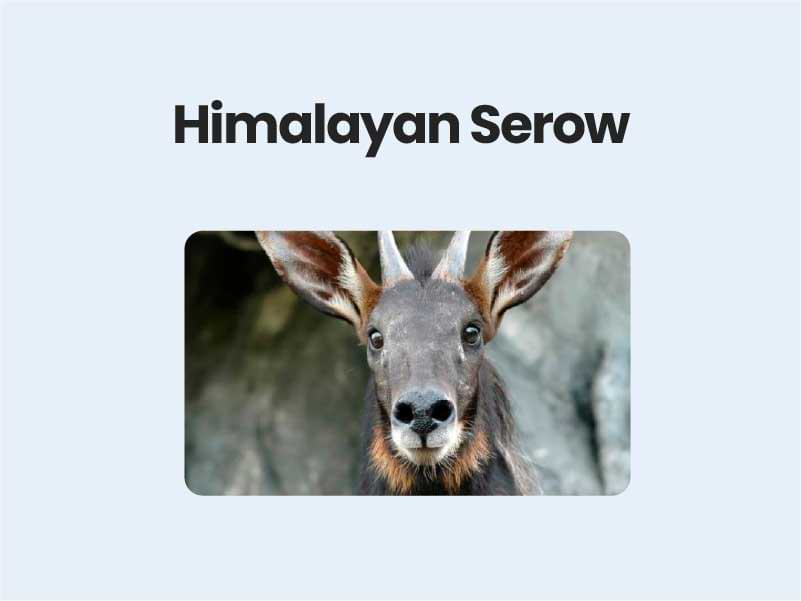Companion@360 → 7 Month programme to sharpen your writing skills → REGISTER NOW

Himalayan serow spotted in Assam
A Himalayan mammal, somewhere between a goat and an antelope, has been confirmed as the newest creature to be spotted in Assam. The Himalayan serow, a goat-antelope, in the 950-sq.km Manas Tiger Reserve. The animal — a high-altitude dweller usually found 2,000-4,000 metres above sea level — was seen being chased by wild dogs.
The serow has been spotted for the first time in the tiger reserve or anywhere else in Assam, but “this does not mean the animal never visited our forests before.
- The sightings of rare animals and birds in Manas is an outcome of better access to remote parts of the protected area where extremists and hunters once ruled.
- “There are chances of more faunal species, found in the higher reaches, being spotted in the park.” The Reserve is contiguous with the 1,057-sq. km. Royal Manas National Park in Bhutan.
- The black-necked crane was also recently sighted in Manas. A pair each of such cranes was sighted on January 10 and February 18. The Buddhists revere the bird that nests in the Tawang region.
- Officials in Manas said the critically endangered whitebellied hero was also seen, birders had sighted the colourful Mandarin duck in the Maguri-Motapung wetland near eastern Assam’s DibruSaikhowa National Park. This duck was last spotted in Assam 118 years ago.
Read Panna Tiger Reserve
Himalayan serow
- A biologist has decribed a Himalayan serow as resembling a cross between a goat, a donkey, a cow, and a pig. It’s a medium-sized mammal with a large head, thick neck, short limbs, long, mule-like ears, and a coat of dark hair.
- There are several species of serows, and all of them are found in Asia. The Himalayan serow, or Capricornis sumatraensis thar, is restricted to the Himalayan region. Taxonomically, it is a subspecies of the mainland serow (Capricornis sumatraensis).
- Himalayan serows are herbivores, and are typically found at altitudes between 2,000 metres and 4,000 metres (6,500 to 13,000 feet). They are known to be found in eastern, central, and western Himalayas, but not in the Trans Himalayan region.
- Spiti lies in the cold mountain desert region of the western Himalaya, and its valley floor has an average elevation of 4,270 metres above sea level.
- Serows are generally not found at this altitude, and never before has a serow been seen in the Himalayan cold desert. Wildlife officials believe this particular animal may have strayed into the Spiti valley from the Rupi Bhaba Wildlife Sanctuary in adjoining Kinnaur.
- According to the International Union for Conservation of Nature (IUCN), Himalayan serows have experienced significant declines in population size, range size and habitat in the last decade, and this is expected to continue due to intensive human impact.
- Previously assessed as ‘near threatened’, the Himalayan serow is now been categorised as ‘vulnerable’ in the IUCN Red List of Threatened Species.
- It is listed under Schedule I of The Wildlife Protection Act, 1972, which provides absolute protection.
- Himalayan serows are solitary by nature, and even though it has been sighted twice, it is “too clever” to be caught for rescue purposes.
